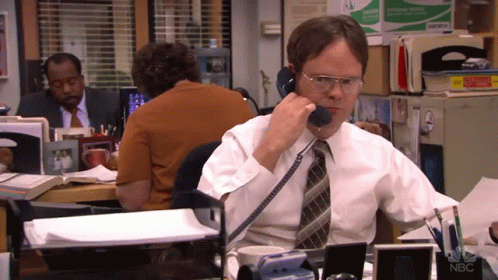How to ace product management interviews
What are the types of product interviews? Which pitfalls to avoid in order to land a product manager's job? How to crush any product interview by following the battle-tested exclusive framework.
Hi and welcome to the Corporate Waters weekly newsletter 🙌
I’m Mikhail and I'm excited to share my learnings to help you navigate the murky waters of product management, leadership, and corporate dynamics. Subscribe to unlock the full value.
In today’s paid newsletter:
Types of product management interviews and questions;
Key pitfalls to avoid;
Battle-tested framework to ace any product interview with a real case example.
I remember my first product interview with Booking.com a decade ago. Back in the day, in the pre-Zoom era, most remote interviews were done by phone. My anxiety was through the roof, palms sweaty, legs trembling. Here I was, pushing myself to the limits of attention in order to discern the question through the static noise.
The case was deceptively simple: “How do I increase the checkout conversion on the current webpage?” I broke it down logically, but then instead of making thoughtful assumptions, I jumped into theory. How to design an A/B test, how to calculate statistical significance, how to define the metrics, etc.
Trying to impress a company that runs 25k A/B tests annually with basic experimentation theories isn’t exactly a winning strategy. Obviously, I got a rejection in the upcoming few days. Yes, it was a flop, but still a great learning opportunity.
Now, already in the interviewer’s seat, I see candidates making the same mistakes and getting stuck in the same traps. The truth is, most of them could have been easily avoided. It’s not about extreme mental agility, deep scientific knowledge, or vast experience, but rather about awareness. Yes, you can become better at product interviews just by being aware of those traps.
Nearing a 400-interview benchmark and seeing all kinds of candidates from diverse cultures and backgrounds, I have had a few insights. My goal is to share them in a condensed form in order to help aspiring product managers or leaders ace their next product sense interview.
Below you will learn: what are the types of product interviews? What are the key things you should avoid in order not to get rejected? How to problem solve any case with real examples. Read on.

Types of product management interviews
If you’re interviewing for a product manager role, you’ll typically have to go through 2 to 7 interviews, depending on the type of company and your seniority. A significant portion of these interviews will be focused on the hard product skills.
Depending on the role, certain companies might require job-specific skills and assess your UX, analytics, and technical competencies (e.g. Product Manager in AI). However, for now, we’ll concentrate solely on product-related questions.
There are three types of product questions: Strategy, product design, and product execution. When interviewing at FAANG companies, it’s likely that you'll have a separate interview for each question type. Smaller organizations or scale-ups might emphasize a single type of question or mix multiple types within a single interview.
Strategy involves opportunity discovery, entering new markets, or enhancing existing business metrics (revenues, profits, etc.). Product design focuses on creating a new product or feature. Execution deals with root-cause discovery and defining success metrics.
Now, let’s delve deeper into the pitfalls that product managers need to avoid in order to successfully navigate the interview.
🤦 Key pitfalls to avoid
❌ Not claryfing the goal
Most product cases are presented in a manner that might make the goal appear straightforward. However, the reality is, interviewers intentionally conceal the goal from the candidates. Never assume the goal, always clarify it before jumping into problem solving. The goal defines the structure and the flow of the whole case.
Case question: “Design a jobs product for Facebook”
Goal can be anything - Revenue, profit, customer acquisition, user metrics, you name it e.t.c.
This is such a simple tweak, yet fewer than ~5% of candidates actually clarify the goal. The majority make silent assumptions and proceed with the case.
❌ Losing focus on the goal
Many times after clarifying the goal, candidates lose focus on it. The case might have a “Profit” goal, yet the candidate will provide a solution for revenue optimization. This is a major red flag. The goal should frame the entire structure of the case.
❌ Not having a structure
One of the biggest interview sins. If you don't have a structure, most likely you're going to get stuck in analysis paralysis. Not only does having a structure help both you and the interviewer navigate through the case, but it also provides a clear context that sets boundaries for idea generation.
If you have no clue what MECE is or how to break down larger ambiguous problems into smaller actionable chunks read this and this.
❌ Being theoretical
A convenient way to avoid thinking is to recite memorized frameworks or algorithms. Countless candidates fall for that. “We’ll do research”, “We’ll run an A/B test”, “Conduct a qualitative survey”, etc. Those answers do not score you any points. On the contrary, they signal that you’re not a first principles thinker who is hesitant to make decisions. Every research is a way to delegate responsibility for decisions onto somebody else - users, stakeholders, etc.
Nobody cares about RICE frameworks or analysis methodologies. What an interviewer expects is the depth of thought, willingness to make assumptions (even if they are wrong), and decisions. At the end of the day, you are interviewing for a position to solve problems, not give lectures on frameworks.
❌ Losing the bigger context
Cracking a PM interview is a great book, but it led many candidates to believe that “User/Problem/Solution” is a silver bullet that can solve any case. Wrong. Look at the type of the question and assess the relevant approach.







